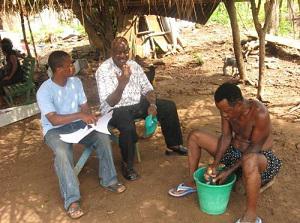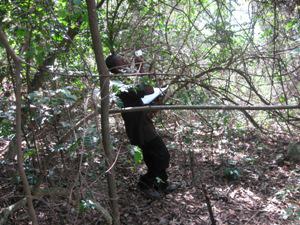Kenneth Anyomi
The aim of this project is to document current status of Talbotiella gentii, including threats and local level of awareness and also to embark on an outreach programme.

Talbotiella gentii Hutch & Greenway is a critically endangered (IUCN) gregarious living perennial legume. Use is made of the wood for timber, fuel wood and charcoal production for many fringe communities. It has limited geographical distribution and can be found only in Ghana (Hawthorne, 1998). In Ghana, this evergreen tree occurs in tiny stands in rocky areas of three dry forests including Sapawsu, Yongwa and Bandai Hill forest reserves. T. gentii is the species with the highest conservation priority in Ghana (Hall and Swaine, 2004). About eight years into the implementation of protection measures for the species (globally significant biodiversity areas, GSBA), data on species recovery, growth, abundance and distribution is unavailable. It is not known what the current threats to species survival, growth and propagation are and whether much more needs to be done to save the critically endangered species. Data is very scanty on the level of local awareness on the global significance of the species and the need for local communities to protect the species. This socio-ecological study is therefore to investigate and document current status of the species, including threats (ranked) and local level of awareness and also to improve community participation in the conservation process.

The project has two major components:

Inventory component seeks to quantify and map species abundance and distribution in the three reserves. This will be carefully carried out by deploying the most efficient sampling methodologies for the specific field situations thereby maximising efficiency and effectiveness whiles minimising errors;
The second component will identify current threats to species survival and also collate fringe community knowledge on the global significance of the species and the need to protect it. This component further seeks to initiate an educational programme for school pupils on the need to protect the endemic species. Analysis of data from this component will be done using appropriate software.
The project holds lots of potential for the endemic species and future conservation projects since it looks into critical questions of species status and threats as well as level of local awareness on global significance of the species. It promises quite interesting results which will be of interest not only to fringe communities and major stakeholders of the resource but also to the wider scientific and conservation community.